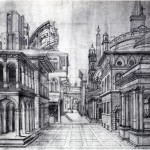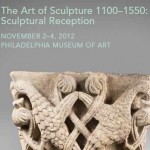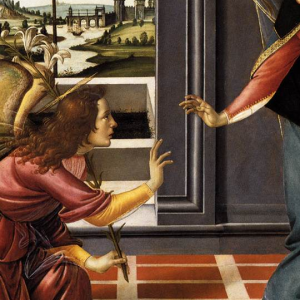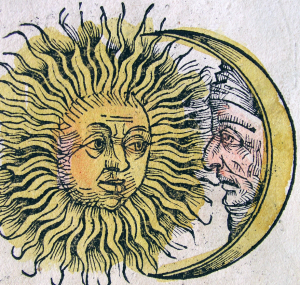Posté par Leonard Pouy, le 2 octobre 2012;
- Date limite : 15 octobre 2012
- Date et lieu du colloque : 21–24 mars 2013, Venise, Palazzo Pesaro Papafava.
 The conference will consider how princely and civic architecture of the period, together with ephemeral architecture constructed for the occasion, have contributed to the implied meaning of a diverse series of festivals across Europe between approximately 1400 and 1700. Scholars have interpreted festivals as temporarily transformative, through visual and dramatic agency, of the political and social significance of great houses and palaces. They have argued further that perceptions of a city’s built environment and princely houses were subject to idealising transformation as a result of ephemeral structures and performed actions during the occasion itself, and subsequently by means of festival books and other records. Festivals were notable occasions of social and political exchange affecting . . . → En lire plus The conference will consider how princely and civic architecture of the period, together with ephemeral architecture constructed for the occasion, have contributed to the implied meaning of a diverse series of festivals across Europe between approximately 1400 and 1700. Scholars have interpreted festivals as temporarily transformative, through visual and dramatic agency, of the political and social significance of great houses and palaces. They have argued further that perceptions of a city’s built environment and princely houses were subject to idealising transformation as a result of ephemeral structures and performed actions during the occasion itself, and subsequently by means of festival books and other records. Festivals were notable occasions of social and political exchange affecting . . . → En lire plus
Posté par Christian Omodeo, le 2 octobre 2012;
 DODICESIMA SETTIMANA DI STUDI CANOVIANI DODICESIMA SETTIMANA DI STUDI CANOVIANI
(Bassano del Grappa, Possagno 23 – 26 ottobre 2012)
La dodicesima edizione della Settimana di Studi Canoviani si inserisce in un piano di ricerca previsto nell’arco di un triennio, avviato con l’edizione del 2010, che ha approfondito il tema “La cultura di Canova”, per soffermarsi quest’anno sul tema dell’invenzione e dei soggetti della scultura nel periodo neoclassico e per arrivare, con la tredicesima edizione, alle riflessioni su “Canova e il Novecento”.
PROGRAMMA:
MARTEDÌ 23 OTTOBRE
ore 15,00 coordina Gianni Venturi ARNALDO BRUNI, Gli dei prima del crepuscolo STEFANO FERRARI, La scultura antica tra storia e filosofia nell’opera di Winckelmann e Guasco FRANCESCO LEONE, . . . → En lire plus
Posté par Jean-Marie Guillouët, le 2 octobre 2012;
- Date et lieu du colloque : 2-4 novembre 2012, Philadelphia Museum of Art, University of Pensylvania.
 Working Group in Medieval Sculpture: A Transatlantic Dialogue The Art of Sculpture 1100–1550 : Sculptural Reception Working Group in Medieval Sculpture: A Transatlantic Dialogue The Art of Sculpture 1100–1550 : Sculptural Reception
The Fourth Annual Anne d’Harnoncourt Symposium November 2–4, 2012 Leading scholars and curators of medieval art examine the uses of medieval sculpture— liturgical, paraliturgical, domestic, civic, private and public—and discuss the affective, social, economic, and artistic responses that sculpture engendered. Presentations also consider questions of influence on later works of art as well as the modern reception of medieval sculpture, including issues of display, museography, and conservation.
The Fourth Annual Anne d’Harnoncourt Symposium is organized by the Philadelphia Museum of Art, History of Art Department, University of Pennsylvania and Institut national d’histoire de l’art, Paris. Generous support . . . → En lire plus
Posté par Damien Bril, le 2 octobre 2012;
- Date et lieu du colloque : 2-4 mai 2013, Florence
- Date limite : 30 novembre 2012
 Florence, Kunsthistorisches Institut in Florenz – Max-Planck-Institut, May 2 – 04, 2013 Deadline-CFP: 30 nov. 2012 Florence, Kunsthistorisches Institut in Florenz – Max-Planck-Institut, May 2 – 04, 2013 Deadline-CFP: 30 nov. 2012
The Announcement: Annunciations and beyond
Interdisciplinary Conference at the Kunsthistorisches Institut in Florenz – Max-Planck-Institut 2 – 4 May 2013 Deadline: 30. November 2012
The Annunciation is, first of all, a long tradition of representations of ‘the’ Annunciation, the one narrated in the Gospel of Lucas: a ‘caesura’ in which everything changed, but also the fragment of time in which this change was made known. An announcement of a birth to come, of course, but also of death, resurrection and redemption. Daniel Arasse established the essential link between the evolution of . . . → En lire plus
Posté par Damien Bril, le 1 octobre 2012;
- Date et lieu : 11-13 avril 2013, Reading
- Date limite : 12 novembre 2012
 Reading, University of Reading, April 11 – 13, 2013 Deadline-CFP: 12 nov. 2012 Reading, University of Reading, April 11 – 13, 2013 Deadline-CFP: 12 nov. 2012
39th Annual Conference and Bookfair University of Reading 11-13 April 2013
Celestial Bodies and their Orbit in Art
The visible planets and the stars have provided important themes and images for artistic practitioners in almost all human cultures. Ancient peoples made close observations of planetary orbits, and constructed complex calendars upon this data. Awareness of astral influences upon the Earth also supported the allocation of various attributes to individual planets, stars and constellations, as well as their deification. Thus, the celestial bodies, and their representations, have played key roles within a wide range of discursive practices, . . . → En lire plus
|
Équipe Rédacteur en chef : Olivier Bonfait.
Rédacteurs : Elliot Adam (Moyen Age) ; Nicolas Ballet (XX-XXIe siècles) ; Matthieu Fantoni (musées) ; Antonella Fenech Kroke (bourses) ; Vladimir Nestorov (Lettre mensuelle)
Administrateur web : Matthieu Lett.
ancien éditeur : Pascale Dubus
anciens rédacteurs : Gautier Anceau, Sébastien Bontemps, Damien Bril ; Sébastien Chauffour ; Ludovic Jouvet ; Aude Prigot
|
 The conference will consider how princely and civic architecture of the period, together with ephemeral architecture constructed for the occasion, have contributed to the implied meaning of a diverse series of festivals across Europe between approximately 1400 and 1700. Scholars have interpreted festivals as temporarily transformative, through visual and dramatic agency, of the political and social significance of great houses and palaces. They have argued further that perceptions of a city’s built environment and princely houses were subject to idealising transformation as a result of ephemeral structures and performed actions during the occasion itself, and subsequently by means of festival books and other records. Festivals were notable occasions of social and political exchange affecting . . . → En lire plus
The conference will consider how princely and civic architecture of the period, together with ephemeral architecture constructed for the occasion, have contributed to the implied meaning of a diverse series of festivals across Europe between approximately 1400 and 1700. Scholars have interpreted festivals as temporarily transformative, through visual and dramatic agency, of the political and social significance of great houses and palaces. They have argued further that perceptions of a city’s built environment and princely houses were subject to idealising transformation as a result of ephemeral structures and performed actions during the occasion itself, and subsequently by means of festival books and other records. Festivals were notable occasions of social and political exchange affecting . . . → En lire plus



